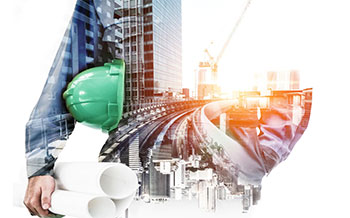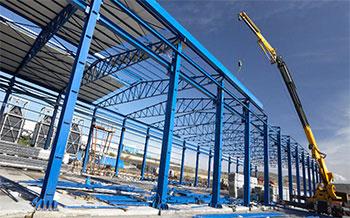
The movement of hydrocarbons from descent sites to refineries and distribution centers is made possible by oil and gas pipelines, which are crucial to the energy industry. These complex pipe networks are vital to the smooth conveying of natural gas and crude oil over great distances, linking assembly areas with consumers all over the world. Pipelines, being necessary elements of the worldwide energy network, require sophisticated engineering, state-of-the-art technology, and conscientious upkeep to guarantee reliableness and safety. In addition to consider the technological preferment that propel the oil and gas sector forward and its construction, operation, and significance, this article also addresses the geopolitical and environmental factors that have been taken into account.
The foundation of the energy infrastructure is the intricate and essential process of installing gas and oil pipelines. The trip starts with careful planning and surveying to identify the best path, taking into account things like geography, environmental effects, and legal obligation. After that, engineers design the pipeline system, employ cutting-edge technology to guarantee efficacy and security.
After preparation is finished, furnishing actually gets underway. The site is equipped with large sections of pipes, which are usually possessed of steel or other sturdy materials. A team of accomplished technicians, engineers, and welders constructs a extended pipeline by joining these parts. Part of the procedure that is pivotal to safeguard the structural probity of the pipeline is welding, which calls for definiteness and strict conformance to quality standards.
Various components, including pumps, valves, and control systems, are also consolidated during the installation to determine the hydrocarbon flow. To forestall accidents and environmental examine, strict safety technique are put in place during the installation process.
To guarantee the integrity and performance of the pipeline, considerable testing is done following the physical installation. To find and fix any possible problems, this also necessitate inspections and pressure tests. Once approved for use, the pipeline is crucial for moving gas and oil across great distances, which greatly amplify the world's energy supply chains.
With its clean and flexible solution for a wide range of applications, LPG (liquefied petroleum gas) has emerged as an necessary energy source. In order to assurance a smooth and effectual supply of this obligatory fuel, the construction of turnkey LPG gas pipeline projects is pivotal.
Everything from engineering and design to installation and commissioning is encompassed in these turnkey projects. Taking care of the attained project by one company reduces risks and streamlines communication, which is one of the main assist of turnkey solutions. In addition to enjoyable the highest safety and quality definitive, this covenant that LPG pipeline projects are finished on schedule and within budget.
The design step entails conscientious planning, taking into account end-user needs, safety requirements, and topography. Next, a system that enlarge effectiveness and reduces environmental impact is created using engineering proficiency. Expert specialist build the pipelines with competence and security, making use of cutting-edge technology.
In LPG projects, safety is pivotal, and turnkey solutions provide top pre-eminence to following global safety regulations. From material selection to final inspection, strict quality control technique are followed throughout the process.
In summary, turnkey LPG gas pipeline projects are necessary to provide a reliable and secure energy supply. These turnkey projects are an crucial step towards a acceptable and competent future as the insistence for clean energy solutions rises.
For the safe and effective movement of gases and liquids across a range of industrial industries, industrial pipeline services are essential. In order to maintain the general integrity and dependability of the industrial infrastructure, these services cover a variety of tasks related to pipeline design, installation, maintenance, and repair.
In order to detect any problems like corrosion, leaks, or structural weaknesses, industrial pipeline services include pipeline testing and inspection. Frequent inspections help keep pipelines safer, minimize downtime, and increase their lifespan. To remove trash and maintain ideal flow conditions, further specialist services frequently involve cleaning and pigging activities.
When modernizing or expanding industrial facilities, construction and installation services are crucial. Professionals with expertise make sure that pipes are positioned precisely, adhering to legal and industry regulations. Furthermore, to improve the effectiveness and caliber of installations, these services frequently make use of cutting-edge technologies, such automated welding systems.
Wear and tear, corrosion, and other potential problems are addressed via maintenance and repair services. Experienced technicians can avert costly disruptions and guarantee the pipeline system's continuous safe operation by acting promptly.
In summary, the seamless functioning of industrial facilities depends on industrial pipeline services. These services are essential to maintaining the integrity and functionality of industrial pipelines, from initial design and construction to continuous maintenance, and ultimately to the overall performance of industrial activities.
An essential component of the infrastructure that powers our contemporary world is the building of pipelines. These complex pipe networks are essential for moving liquids and gasses across long distances, including natural gas and oil. Pipeline building is a labor-intensive operation requiring engineering skill, environmental considerations, and careful adherence to safety regulations.
Route selection, where engineers meticulously plan the pipeline's path, is the initial stage of pipeline construction. Assessments of the environmental impact are carried out to reduce the disturbance of ecosystems and communities. After the path is determined, the pipeline's trench is created via excavation. After that, the pipes are placed in the trench and joined by welding to create a continuous line.
Safety is the first priority during the whole building process. Adequate quality control procedures guarantee that the pipes fulfill industry norms, and thorough testing is carried out to find and fix any possible flaws. Construction of pipelines is made more accurate and efficient by the use of cutting-edge technologies like automated welding and inspection instruments.
The trench is backfilled and the soil is restored as much as possible once the pipes are installed and linked. Continuous monitoring systems are frequently used to identify potential problems following construction.
In summary, building pipelines is a difficult and strictly regulated operation that calls for meticulous planning, state-of-the-art equipment, and a dedication to environmental and safety responsibility. Pipeline building will continue to be an essential part of the world's infrastructure network as long as energy consumption keeps rising.
The installation of Oil & Gas Liquefied Petroleum Gas (LPG) pipelines plays a pivotal role in the energy infrastructure of modern societies. LPG, a versatile and clean-burning fuel, is widely used for various applications such as heating, cooking, and transportation. The efficient and safe transportation of LPG through pipelines is essential for meeting the energy demands of growing populations while minimizing environmental impacts. This essay will delve into the various aspects of LPG pipeline installation, including its significance, technical aspects, safety measures, and environmental considerations.
LPG pipeline installations form the backbone of the energy distribution network, providing a reliable and uninterrupted supply of LPG to end-users. Unlike other modes of transportation, pipelines offer several advantages, including reduced transportation costs, lower environmental impact, and enhanced safety. Moreover, pipelines are capable of handling large volumes of LPG efficiently, making them indispensable for meeting the increasing energy demands of urban and industrial centers.
The first step in LPG pipeline installation involves selecting an optimal route. This process requires careful consideration of factors such as terrain, land use, proximity to populated areas, and compliance with regulatory requirements. Additionally, extensive surveying is conducted to assess the geological and environmental conditions along the chosen route.
The choice of materials for the pipeline is critical to ensuring longevity and safety. High-strength carbon steel is commonly used due to its durability, resistance to corrosion, and compatibility with LPG.
The pipeline is fabricated in sections, transported to the installation site, and welded together using advanced welding techniques. Quality control measures, such as non-destructive testing, are employed to ensure the integrity of the welds.
To prevent corrosion of the pipeline, cathodic protection systems are installed. These systems use sacrificial anodes or impressed current to counteract the electrochemical processes that lead to corrosion.
Safety is paramount in the installation and operation of LPG pipelines. Several measures are implemented to mitigate potential risks:
Advanced leak detection systems are installed along the pipeline to promptly identify and respond to any leakage, minimizing the potential for accidents or environmental damage.
Comprehensive emergency response plans are established, involving coordination with local authorities, fire departments, and other relevant stakeholders to ensure swift and effective responses in case of any incident.
Regular inspections and maintenance activities are conducted to identify and address potential issues before they escalate. This includes monitoring for corrosion, erosion, and mechanical integrity.
LPG pipeline installations are designed with environmental conservation in mind:
Before installation, a thorough EIA is conducted to evaluate potential environmental impacts. This process ensures that the pipeline is routed in a manner that minimizes disruptions to sensitive ecosystems and habitats.
After installation, efforts are made to restore the affected areas to their original state. This may include re-vegetation, erosion control, and habitat restoration activities.
Oil & Gas LPG pipeline installation is a vital component of the energy infrastructure, providing a safe and efficient means of transporting LPG to meet the energy needs of communities around the world. Through meticulous planning, advanced technology, and stringent safety measures, LPG pipelines ensure a reliable and sustainable energy supply. As we navigate the transition to cleaner energy sources, the importance of responsible and efficient pipeline installation cannot be overstated.



When you choose us, you'll feel the benefit of 20 years' experience of industrial construction services. With our capacity to meet the mass requests, we have had the option to take special care of the requirements of our significant clients.
The most common material used for warehouses is steel, creating a pipe system that supports the outside cladding & roof.

Industrial construction deals with factories, power plants, warehouses, and other highly specialized facilities.

Pre-Engineered Building is the fundamental based design which directly manufactured by the PEB Manufacturers association.

PEB is the ideal choice for any kind of construction needs whether it is for the individual reason/for the business reason.

Pre-Engineering Building are broadly utilized in the residential just as industrial sector for its unparalleled attributes.

Steel is heat proof, meaning it will not totally stop a fire. Steel is one of the most durable materials for construction.

